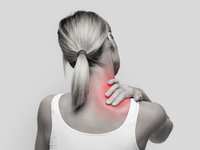- Categories :
- More
The Mystery Behind Those Red Circle Marks: Cupping Therapy Explained

Have you noticed those red circle marks on athletes and fitness enthusiasts? These distinctive marks come from cupping therapy, an ancient recovery technique that has gained popularity among top athletes like Michael Phelps and elite gymnasts.
What is Cupping Therapy?
Cupping therapy involves placing heated cups on the skin to create suction. This vacuum effect draws blood to the surface, increasing circulation and promoting muscle recovery. While the marks left behind might look intense, they are actually a sign of improved blood flow and healing.
The Benefits of Cupping Therapy
Cupping offers a range of benefits that make it a favorite among athletes, fitness enthusiasts, and those seeking natural pain relief:
- Relieves Muscle Pain – Helps release tension and alleviate soreness in targeted areas.
- Reduces Inflammation – Aids in calming inflamed tissues, supporting overall recovery.
- Speeds Up Healing – Encourages faster muscle repair after intense workouts or injuries.
- Improves Blood Circulation – Enhances oxygen and nutrient delivery to the muscles.
- Boosts Flexibility – May help increase range of motion and decrease tightness.
Understanding the Marks
The red circles left behind after cupping therapy are a direct result of increased blood flow. The darker the mark, the more circulation is being stimulated in that area. These marks typically fade within a few days and are a sign that your body is actively working to heal itself.
Is Cupping Right for You?
Whether you’re an athlete looking to optimize performance or simply seeking relief from everyday muscle tension, cupping therapy can be a valuable addition to your wellness routine.
Ready to experience the benefits for yourself? Book an appointment today and see how this ancient practice can enhance your recovery and well-being.










